Art Journal Supplies from the Hardware store
Some links in this post are affiliate links to products I love!
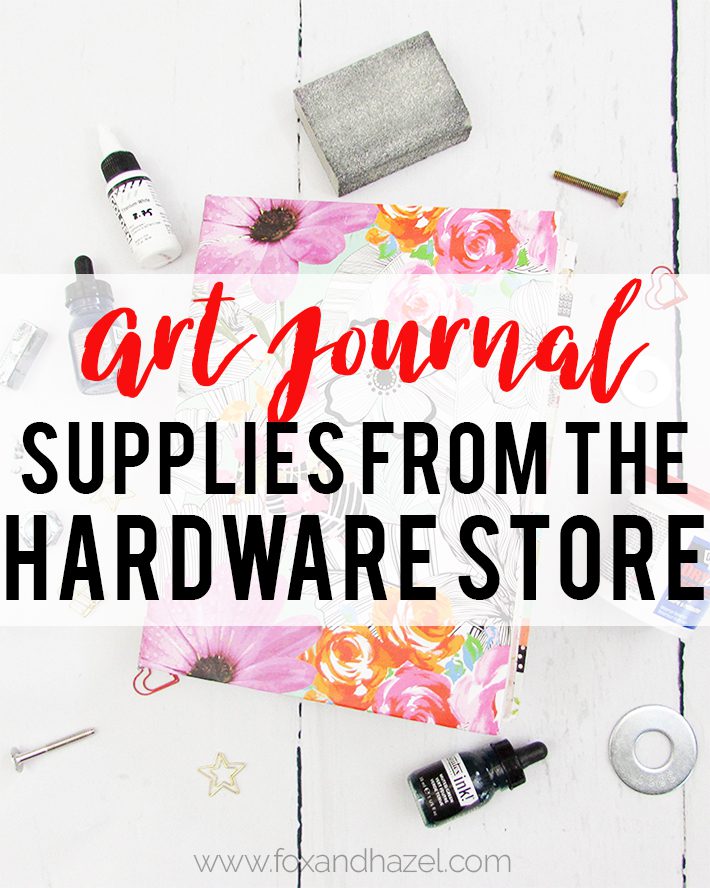
You can find some pretty cool art journal supplies in unexpected places, and I love exploring unconventional materials to use in my art journal and mixed media pieces. The hardware store isn’t the first place you think of when you think “art journal supplies”, but I’ve found some cool materials there that are unique on their own or dupes for art supplies. Using items outside their original purpose can be equally challenging and rewarding, especially when the end result creates a fun new outcome.
I’ve rounded up some materials that you can get at your local hardware store or online, and are really reasonable in price. Part of trying new materials is also the affordability factor – it’s scary to try new expensive mediums and materials! Exploring the hardware store can open you up to new ideas that won’t stretch your wallet too much. Get ready for some photos cause there’s a LOT.
1. Washers, bolts, nuts, screws, etc.
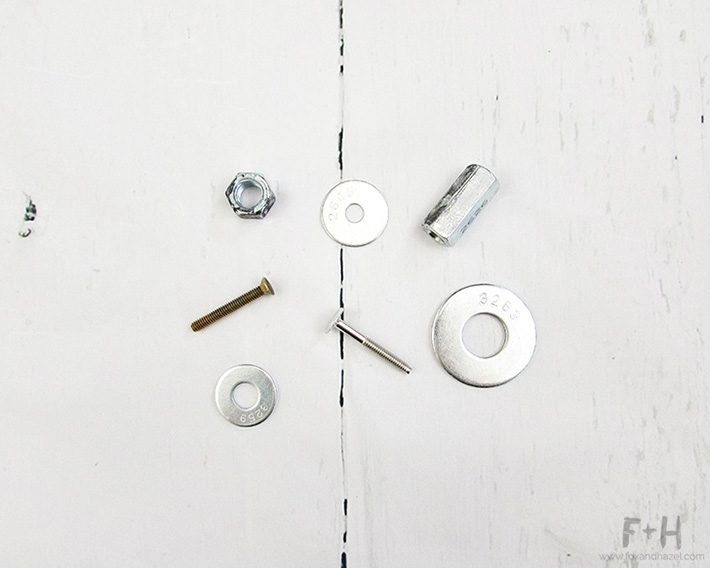
These are typically really cheap (from a few cents to maybe $2 tops) and they can be used to create interesting marks and patterns in your work. I had picked them up originally thinking they would make for cool stamps, but since they’re metal they don’t transfer a solid image. But if you like a distressed/grungy effect, they leave some unique marks on your page that can add texture. I used the screw heads and nuts to create circle marks on these pages below. You could get creative and try a whole bunch for just a few bucks.
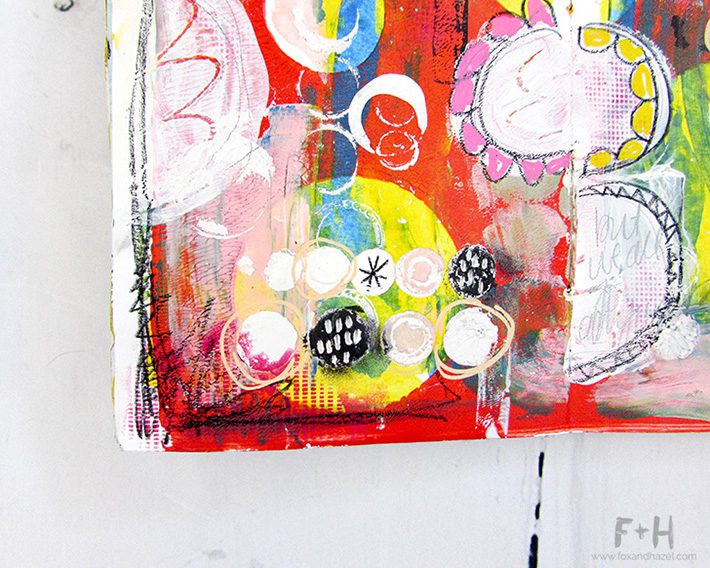
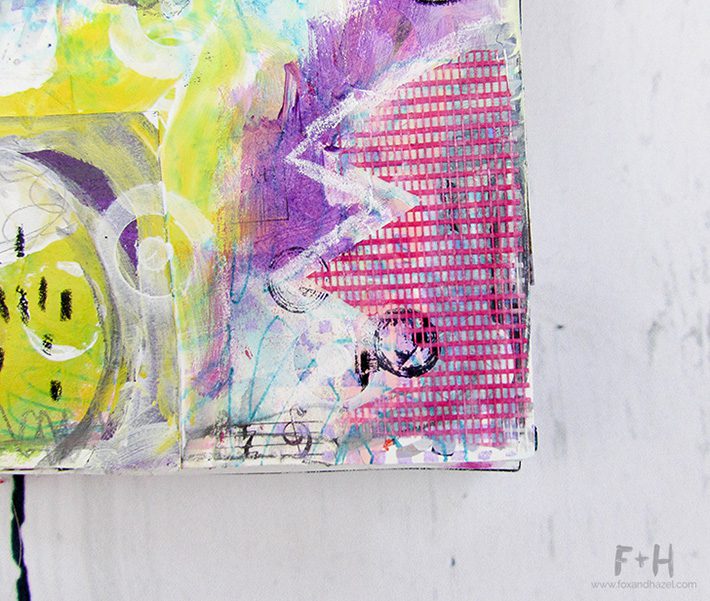
2. Tapes: masking, aluminum ducting, and drywall joint.
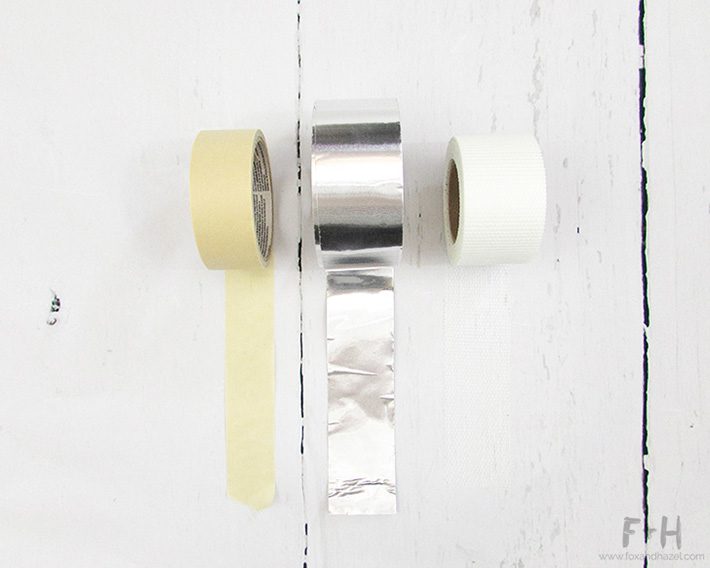
All of these tapes are really versatile in creating texture, layers and can be used as elements in a page. I really like using masking tape and aluminum ducting tape in my backgrounds to create texture before going over with paint.
Drywall joint tape is a great alternative to scrapbook mesh, and can be used for texture as well as stencilling!
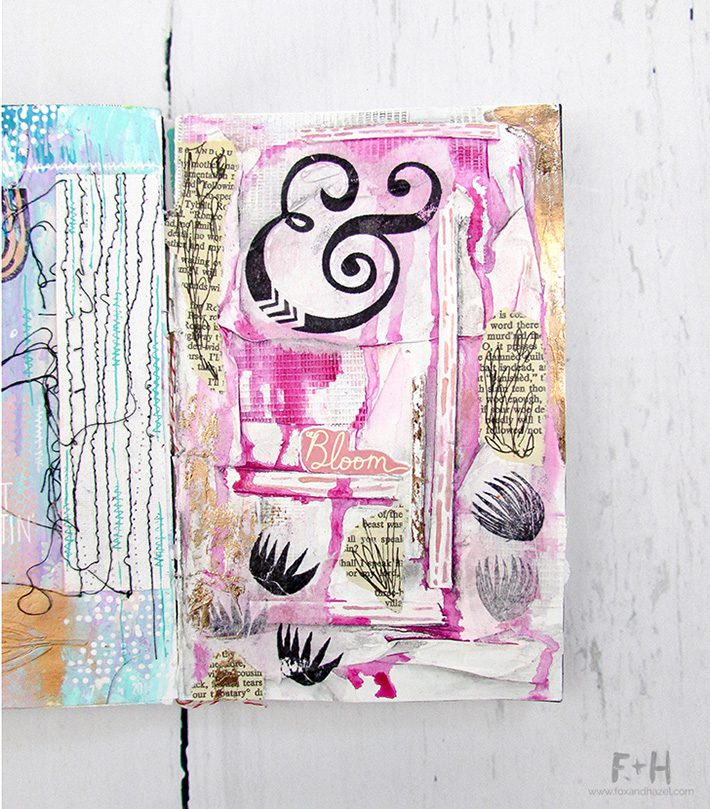
In this page I’ve used a variety of materials to create a really textured background. I used both masking tape to get the wrinkled effect at the bottom, as well as the drywall tape at the top for the mesh effect. Super cool!
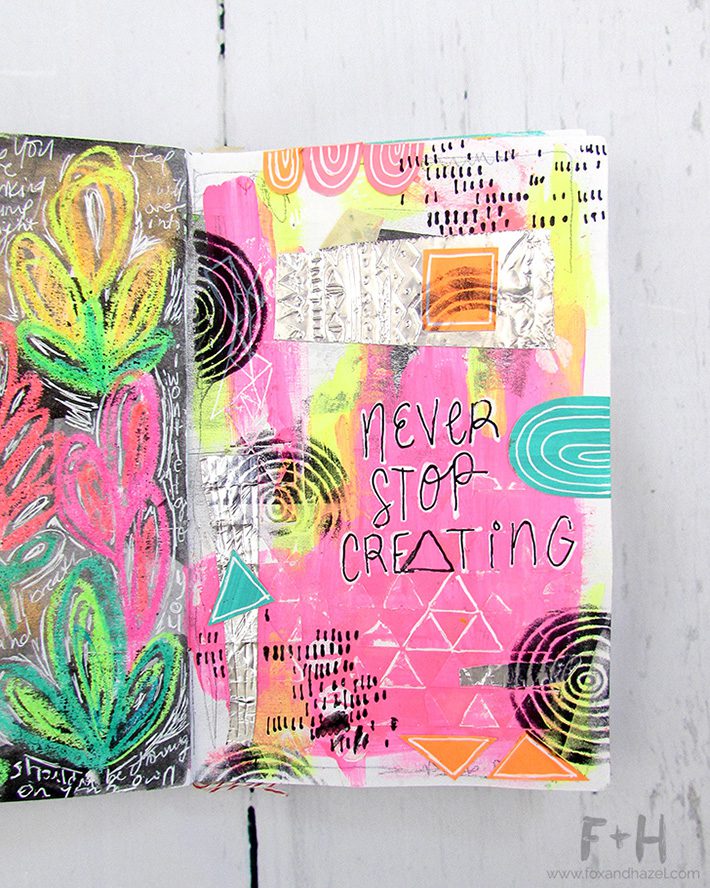
Here I used the aluminum tape to add some elements to my page. After I added them I went back with an embossing stylus and carved in some patterns to add more detail. I also used it in another page to create some shapes along the bottom to add a metal element to the page!
3. Drywall putty + putty knife
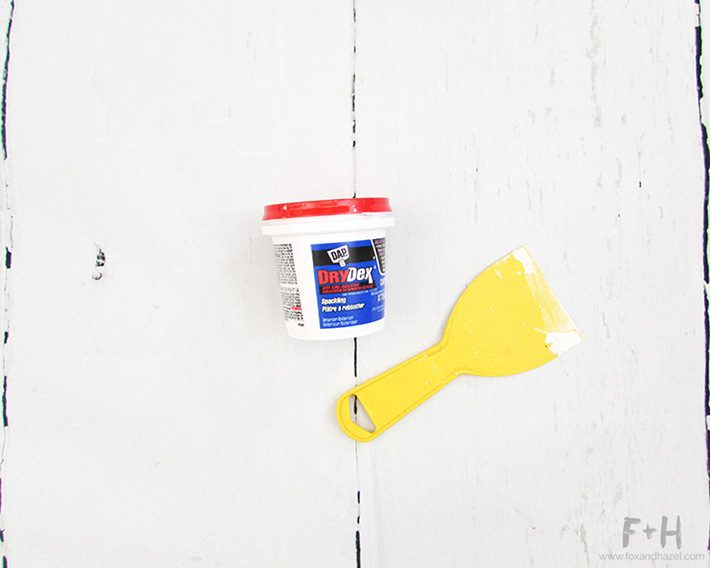
This was actually my husband’s idea after he saw me using modeling paste on some pages. Modeling paste is a staple in my art journal supplies, so trying to find a dupe for it was fun! Using drywall putty/spackle can be a great alternative if you don’t have modeling paste and can’t get your hands on any. There are several different types and they all vary in their hardness and water solubility. The container I grabbed was under $3 and can be washed off with water. It worked awesome as a modeling paste substitute and was soft enough to carve into once it was dry. I used it in the spread below to create the circles.
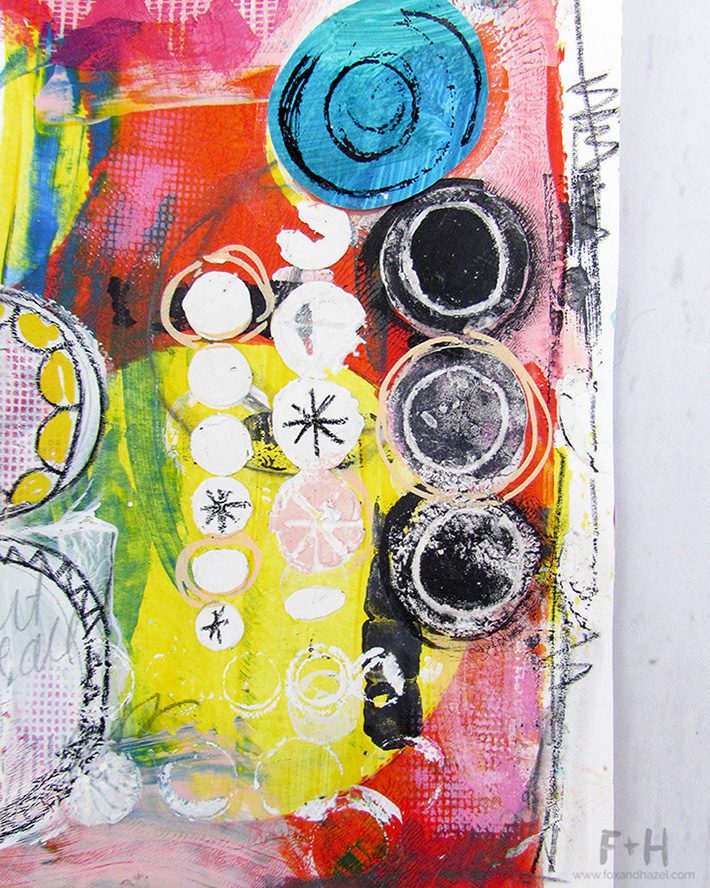
I will note that the putty I picked up was quite soft even when fully dried, so it was easy to carve into but also had a tendency to wear or sand off if it rubbed against another page. This was probably due to picking the water-soluble putty. I solved this by sealing it with some matte medium so it wouldn’t rub off. You can also see that I used that drywall tape as a stencil for texture here too!
The putty knife can be a fun alternative to palette knifes and come in larger sizes so you can cover a page more quickly, and cover more of a stencil in one pass. I used it here to create a textured background before painting over it.
4 + 5. Shelf liner + Sandpaper
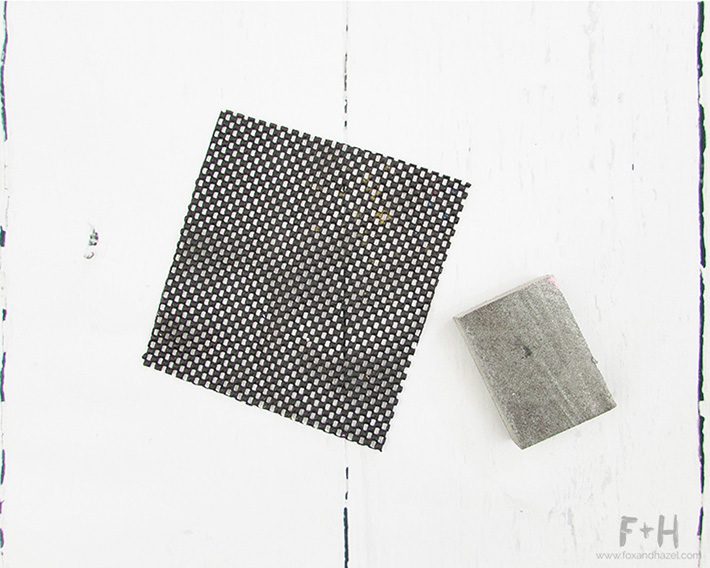
This small chunk of shelf liner came courtesy of my husband’s toolbox, as well as the sanding block. So they technically came from the hardware store by way of my husband. Both of these materials can be used as stamps to create texture on your pages. The shelf liner could also serve as a stencil. I also used the sanding block to sand down some drywall putty I used. I put the putty through a stencil, then painted over it, and used the sand paper to sand off some of the edges and reveal the putty underneath. It can also be used to distress the edges of your paper if you use a rougher grit.
6. Spray Paint
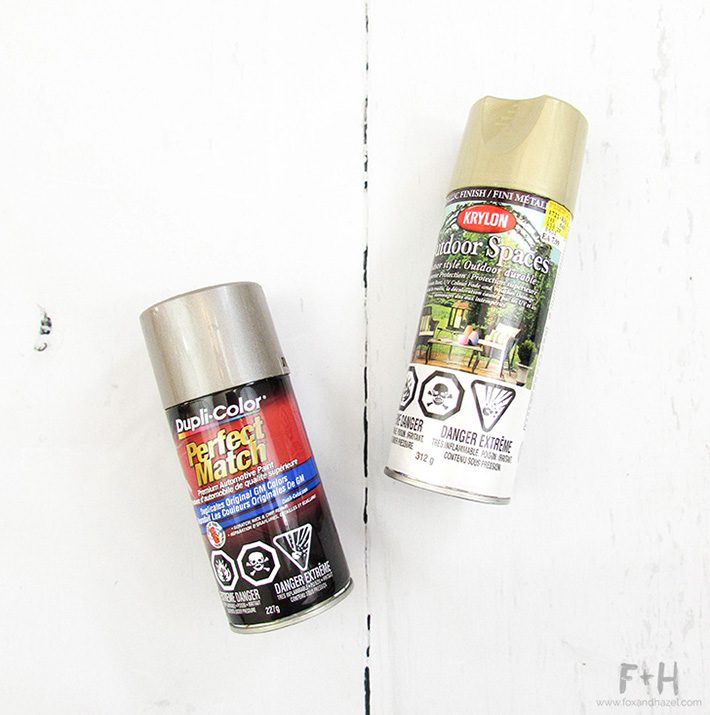
Spray paint is a really fun addition to your art supplies. Now, you can buy spray paint at the art store made by art brands. However, some of us don’t want to pay that much for paint or don’t have easy access to a craft/arts store. Your local hardware store has an entire aisle of paints that come in everything from metallics to neons. And I say take advantage of it! You can also raid your garage for anything that is from a leftover project like I totally did.
You can create some really cool backgrounds by layering paint, creating splatters, masking shapes first and by drawing in the wet paint.
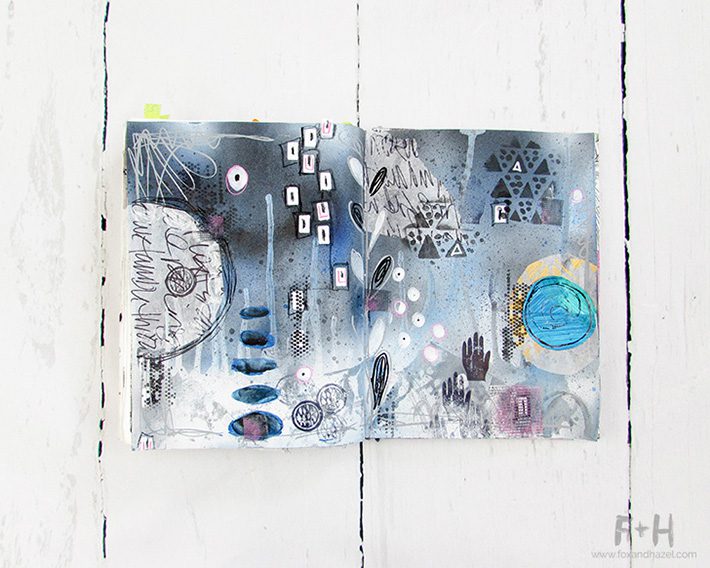
I used black, white and blue spray paint to make the background in this spread. I love the airbrushed texture with the drips and splatters. It was really fun to get messy and layer them on!
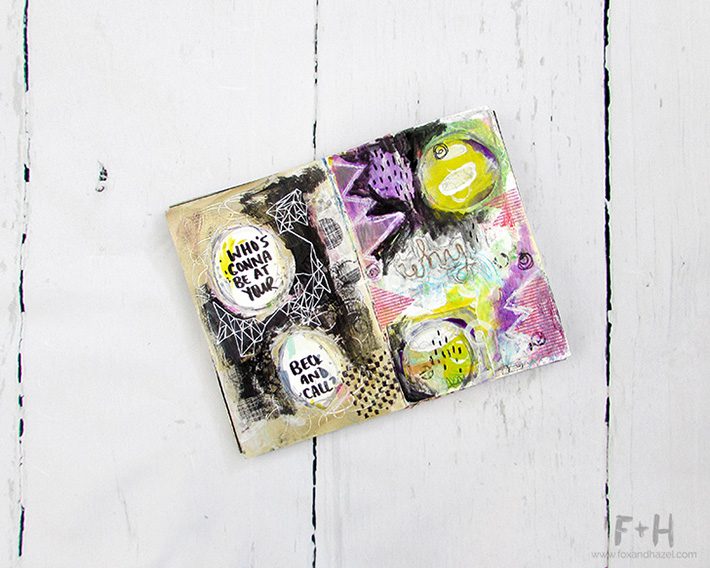
The page on the left I used gold spray paint over an old page I hated, but wanted to keep the words. I used some cardstock circles to mask over the words and put down a thick layer of paint. While it was still wet, I used the end of my paintbrush to scribble in it
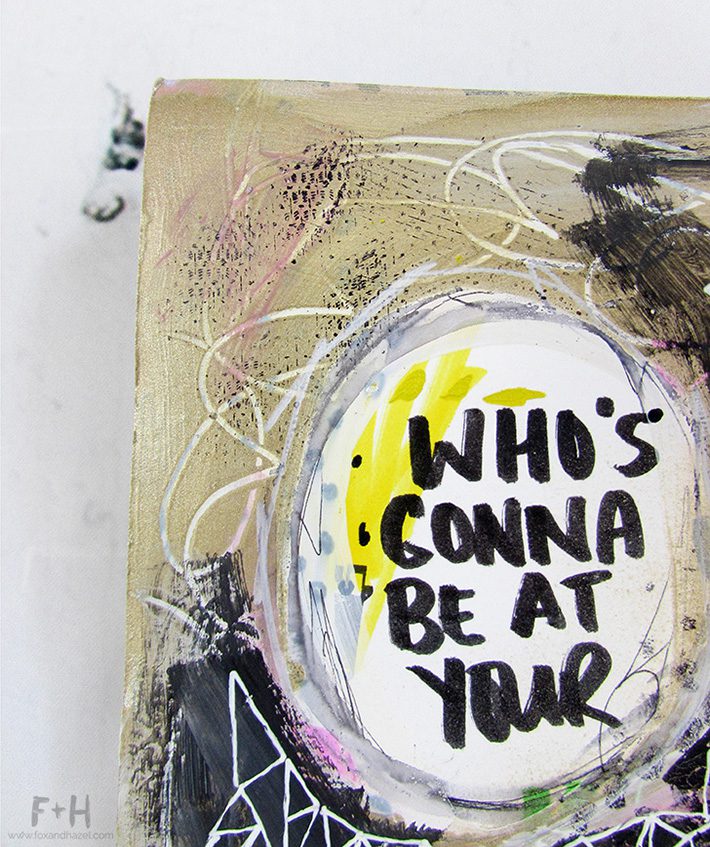
7. Wood Veneer Tape
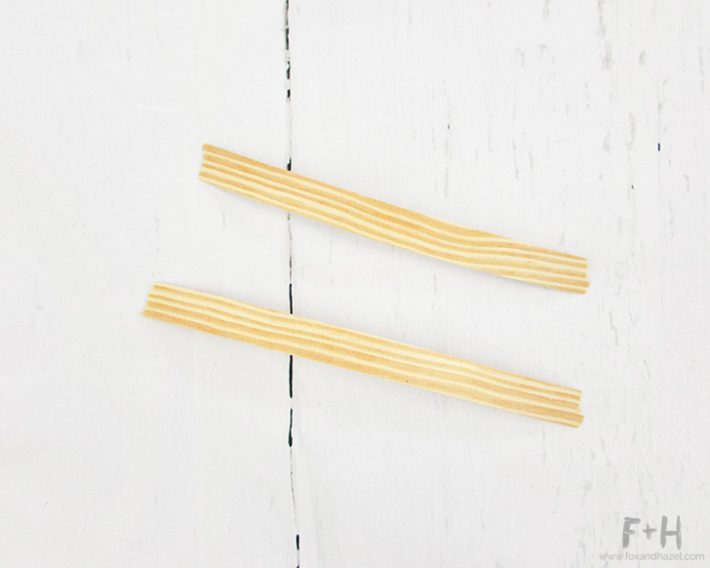
This was a super fun material I happened on while we were doing some work in our basement. It is really thin wood veneer with an adhesive backing on it. It’s meant for finishing the edges of tables, counter tops, etc. You can find it in all kinds of woods and finishes, so the possibilities are endless. The wood veneer tape typically has heat activated adhesive on the back, so I heated it up with my heat tool and stuck it down on the page.
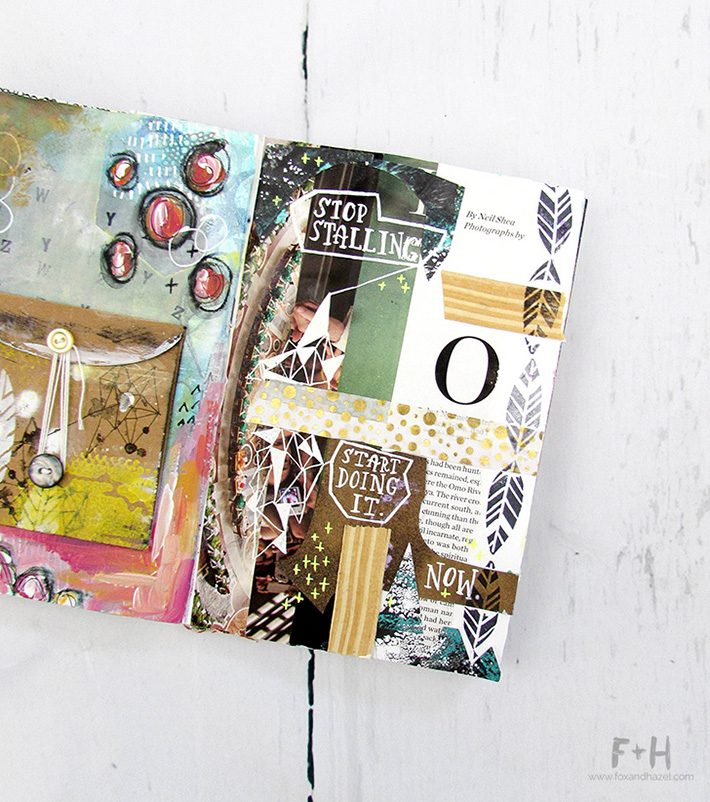

It can also be used to create texture on a background before going over it in paint. I used it back in the page under the tapes! Another cool way you could use it would be as a label or mount for words you wanted to add to your pages. Need to write that down so I can give it a go! Overall, I found it to be a really unique additional to my art journal supplies and like playing with it!
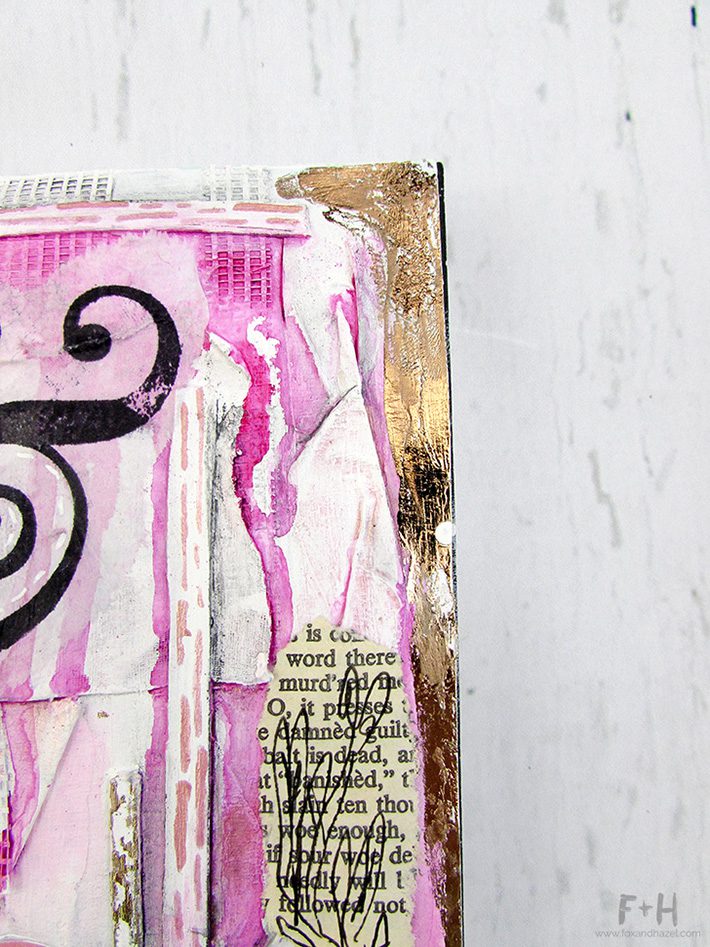
8. Copper Wire
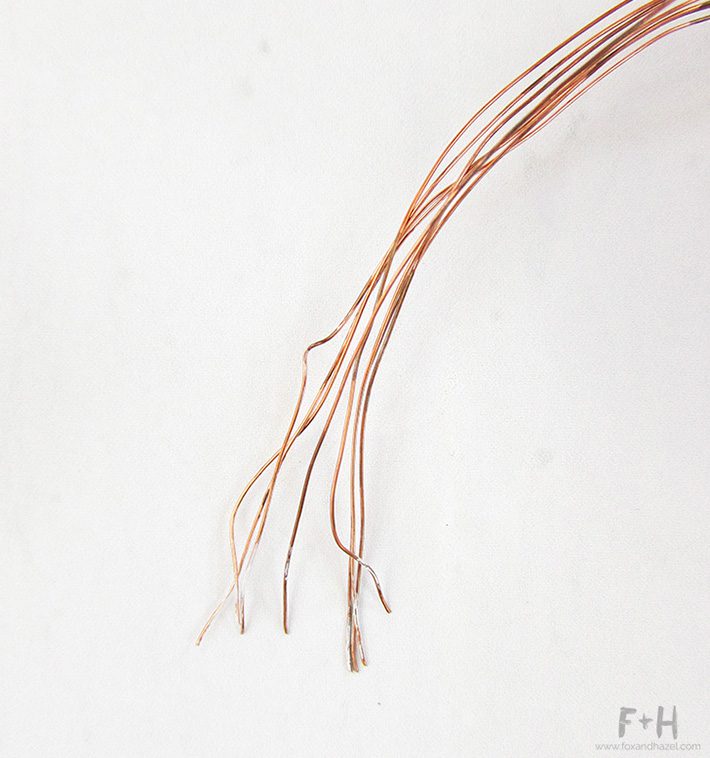
This was another idea of my husband’s, that smart guy! Using copper wire to create elements to add to a page! The wire I have here is actually audio speaker wire. I just stripped the coat off the wire, and in it is a bunch of smaller copper wires twisted together. Just separate them & you have copper wire. Wire comes in different gauges, so I recommend just taking a close look at the wire when you buy it at the store. The cool part is that you buy wire by the foot, so you can just buy 1 foot of it and depending on how many wires are inside you can get up to 20 feet of really thin flexible copper wire!!
You want the thinnest you can find because it will be the most flexible and easiest to work with. Here I’ve used it to create a word and sealed it with matte gel medium, and also as the stems in this flower bouquet.
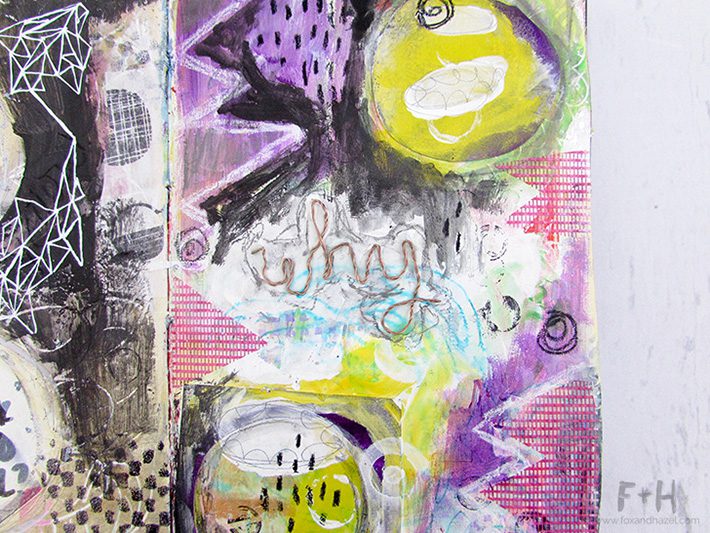
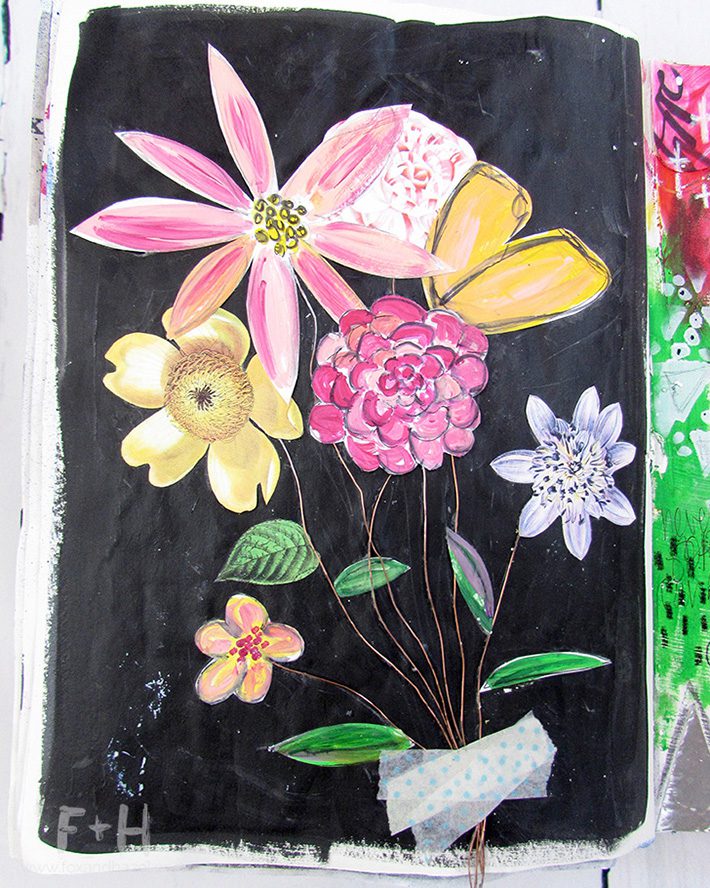
The hardware store can be another extension of the art store if you start looking at items differently. Once you start, you’ll be looking at everything and wondering if it would work in an art journal page! Do you have any other unconventional art supplies you like to use? Shout them out in the comments below – I’m always keen to try new materials!

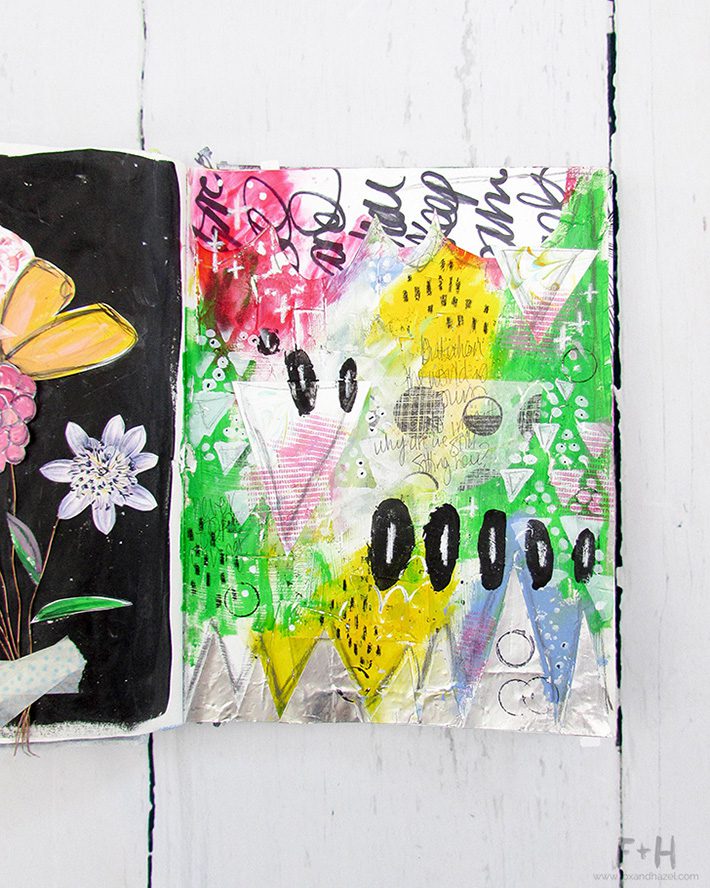
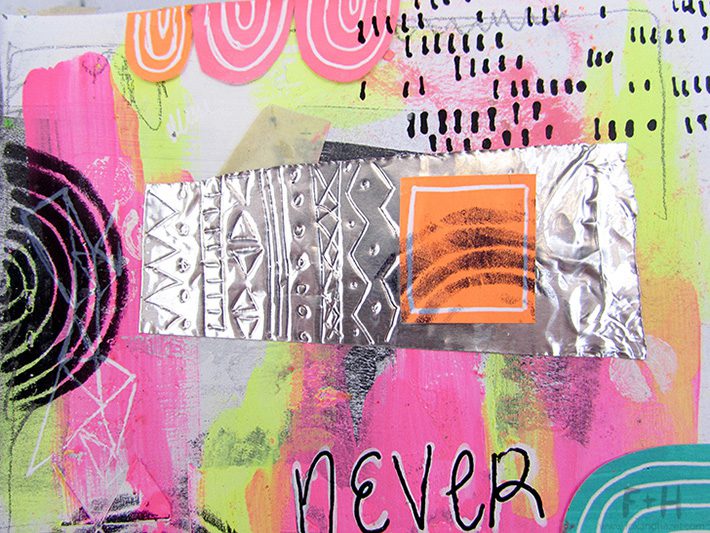
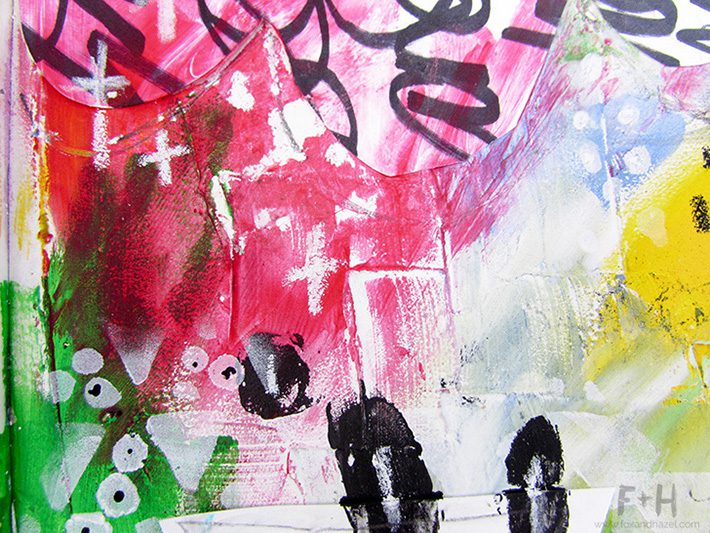
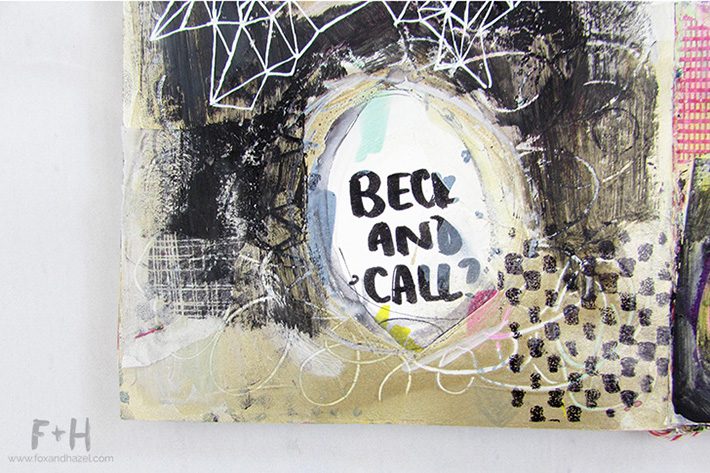
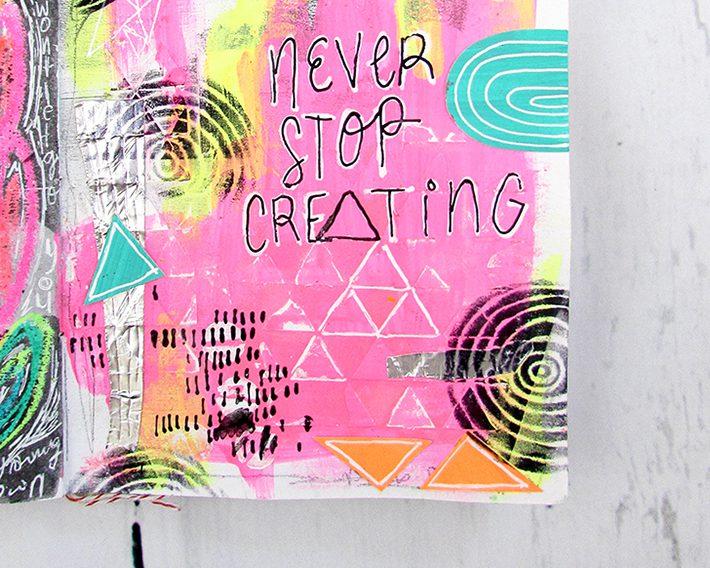

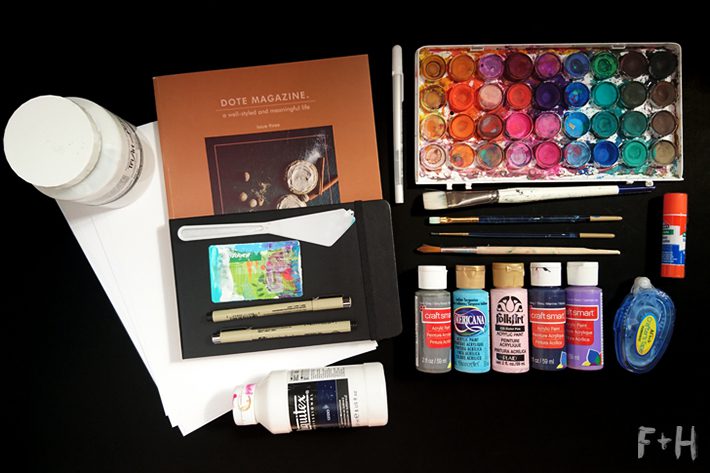
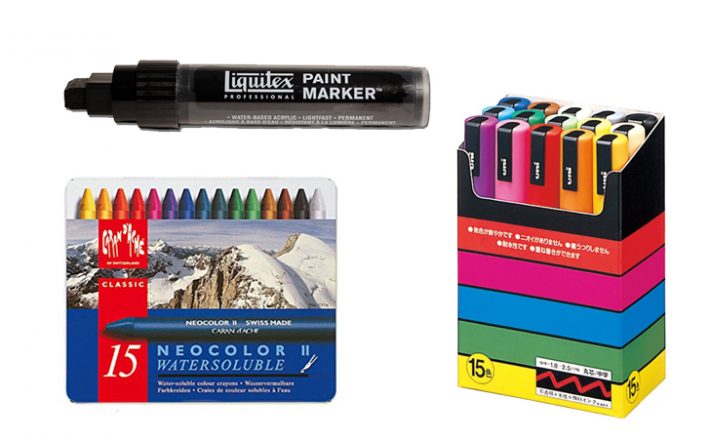
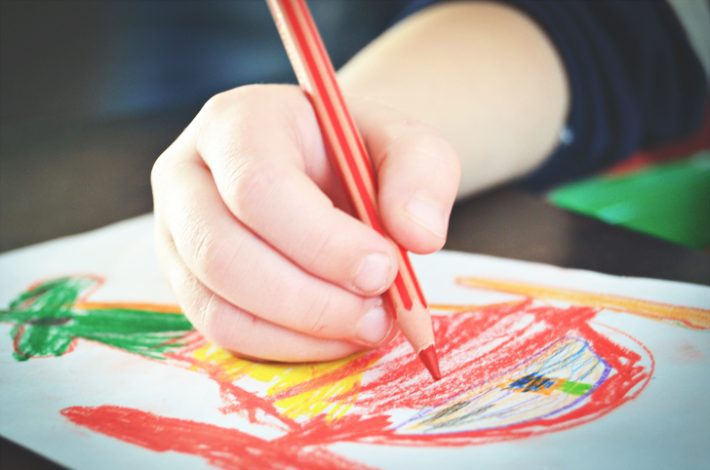
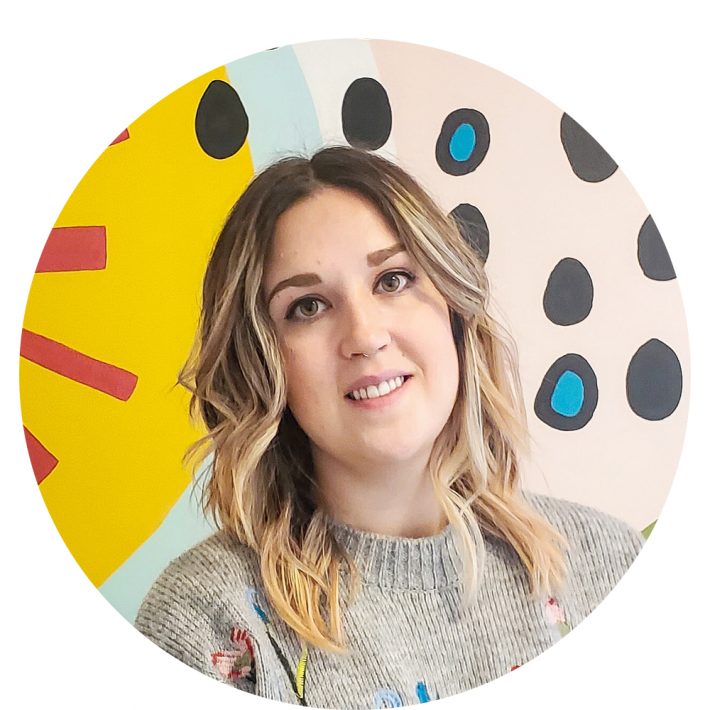
3 Comments
Christine Elia
July 31, 2018 at 2:36 pm
OMG… I just found your blog after taking on a position to teach an art journaling class to a small school for underprivileged kids – did I mention they are all boys! Your blog on using supplies from a hardware store are genus for boys. Sometimes art is perceived as being more for girls… using these tools may help that! Thank you so much. Any other masculine art suggestions or prompts are much appreciated.
torrielynn
August 2, 2018 at 2:01 pm
Hi Christine! So happy you found this post at the right time! What a great opportunity to share your love of art with some kids – love it! I think art supplies are universal to any gender as long as there is a wide range of colors and tools to choose from. Depending on the age group, a range of paints, markers, oil pastels and crayons can be a great starting point! Magazines that are age appropriate with lots of different humans (for all kids to identify with) and children’s books for collage elements are also great. I hope that can help give you some ideas. Good luck with the class!!
Rebecca Johnstone
February 11, 2017 at 5:05 pm
Absolutely love this! Some amazing ideas & I think I have lots of these things. Definitely want to try the spray paint. Neons would be cool & the copper wire to make words is genius!! 😉